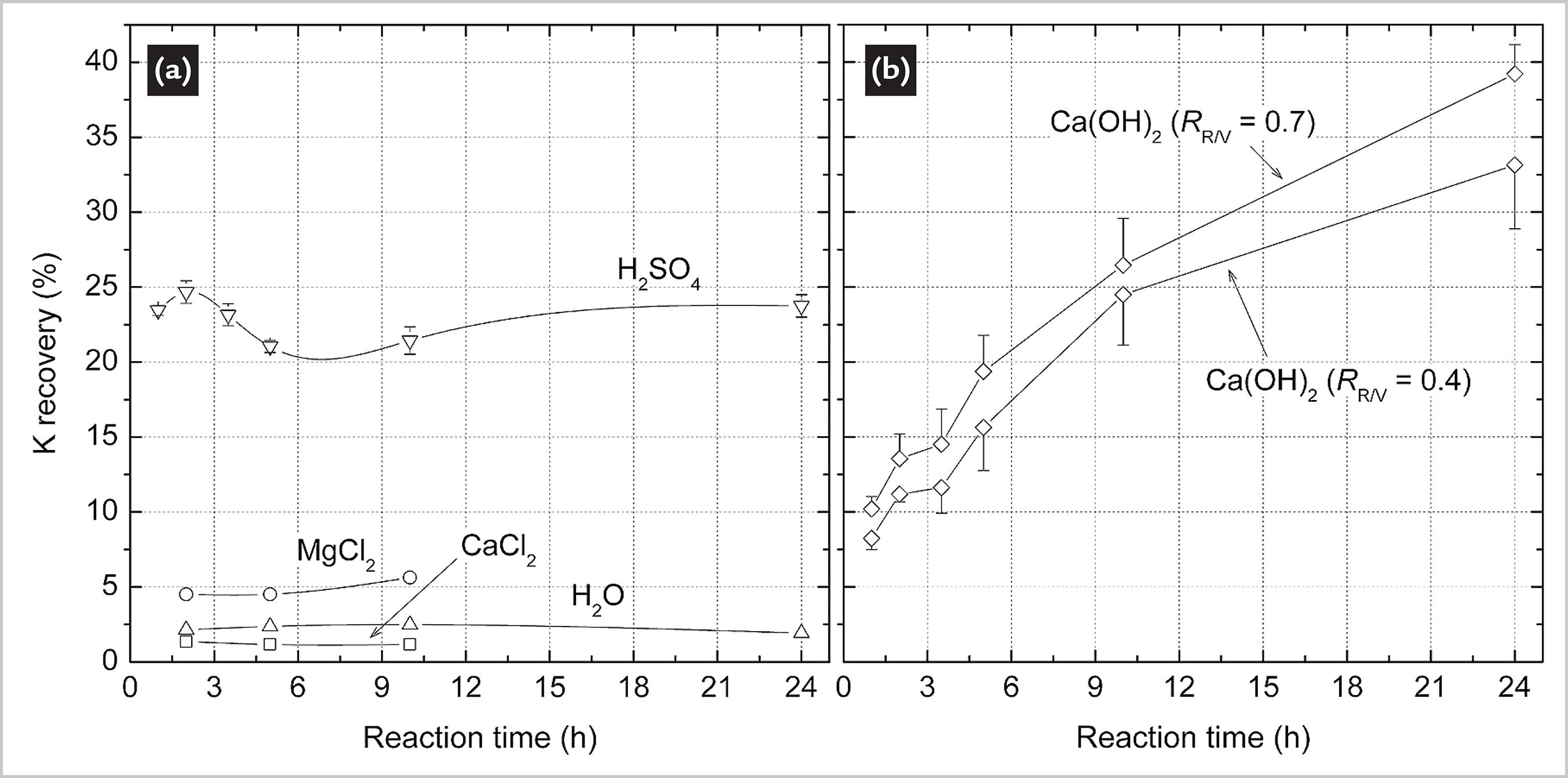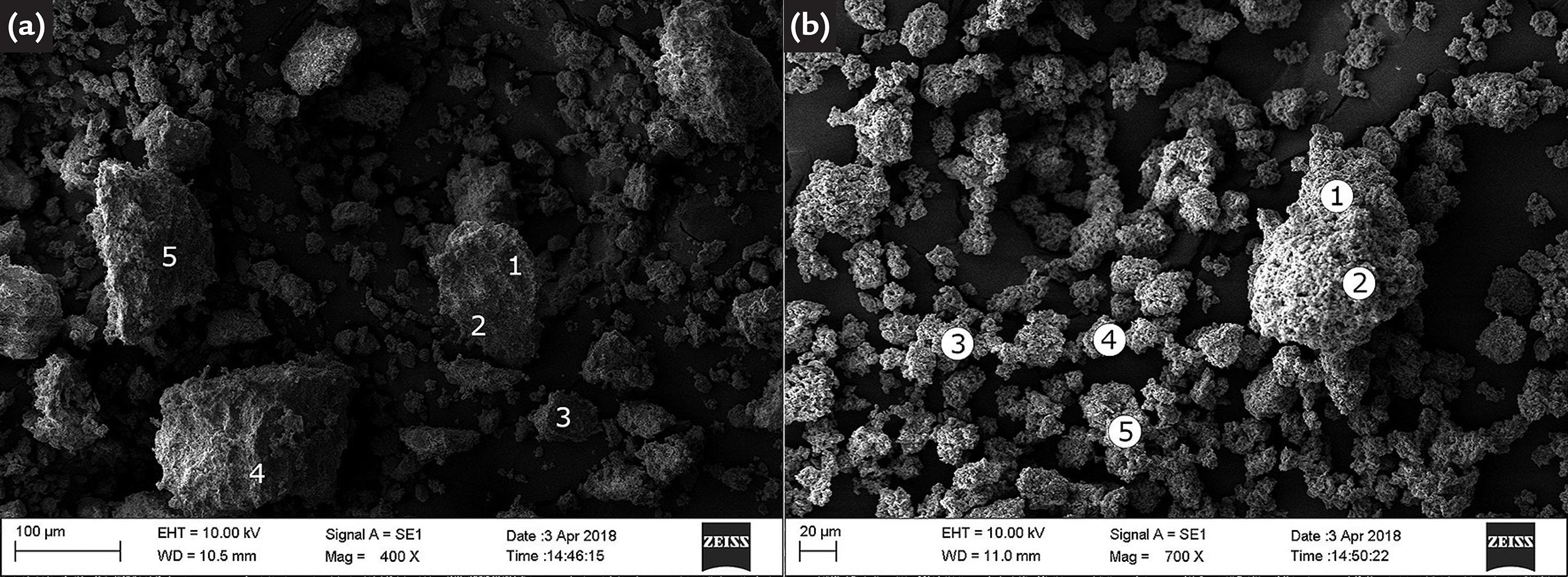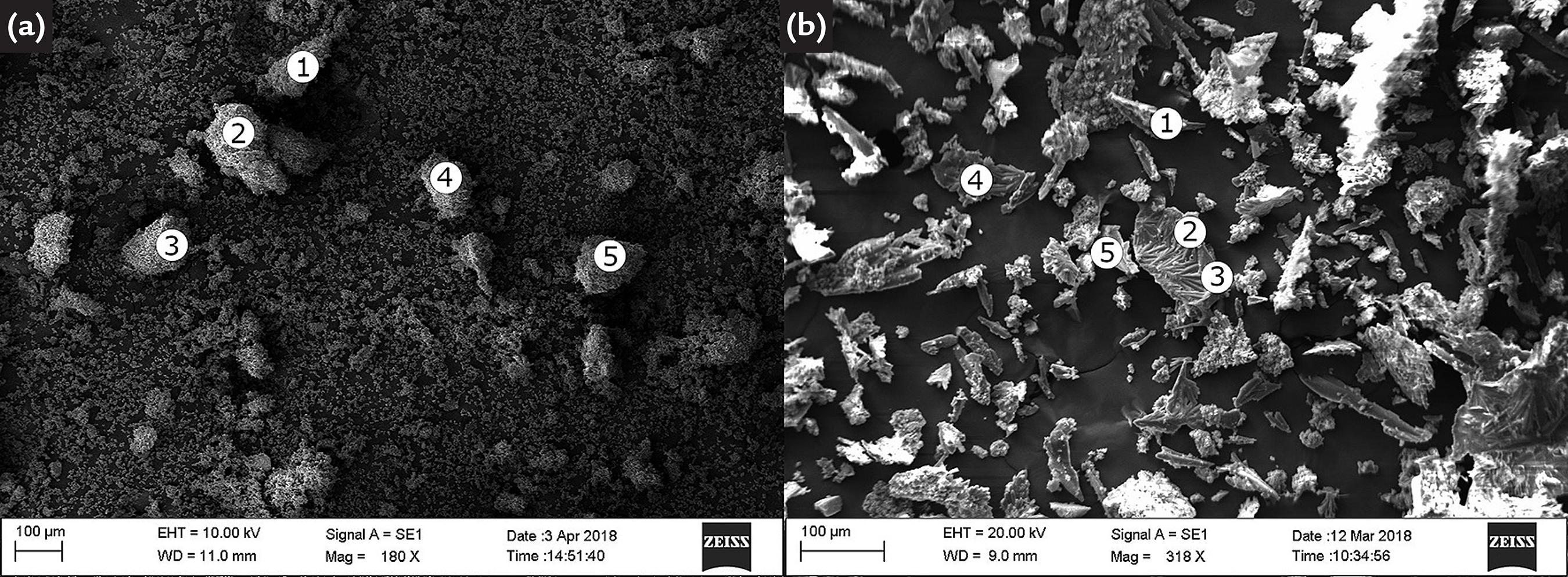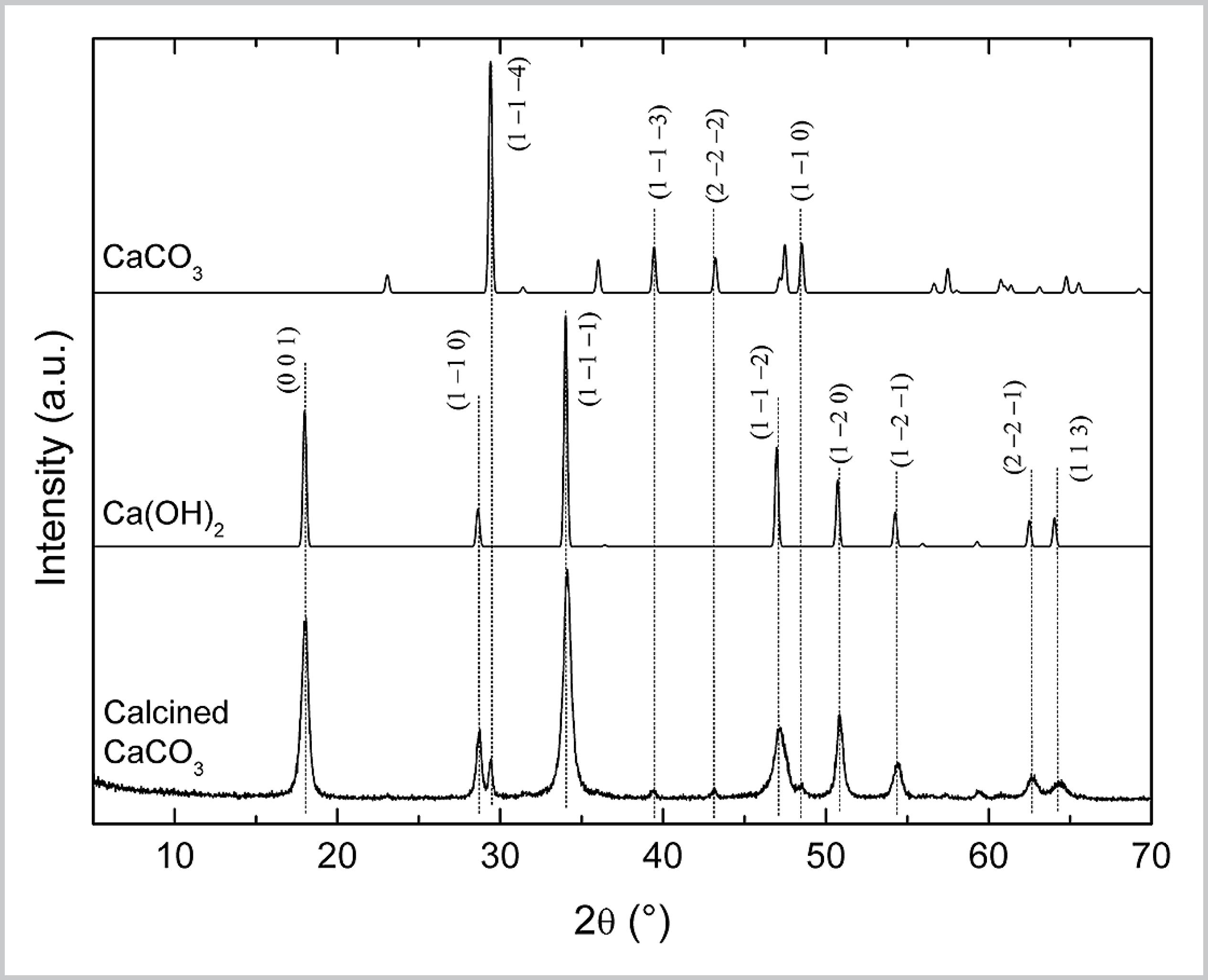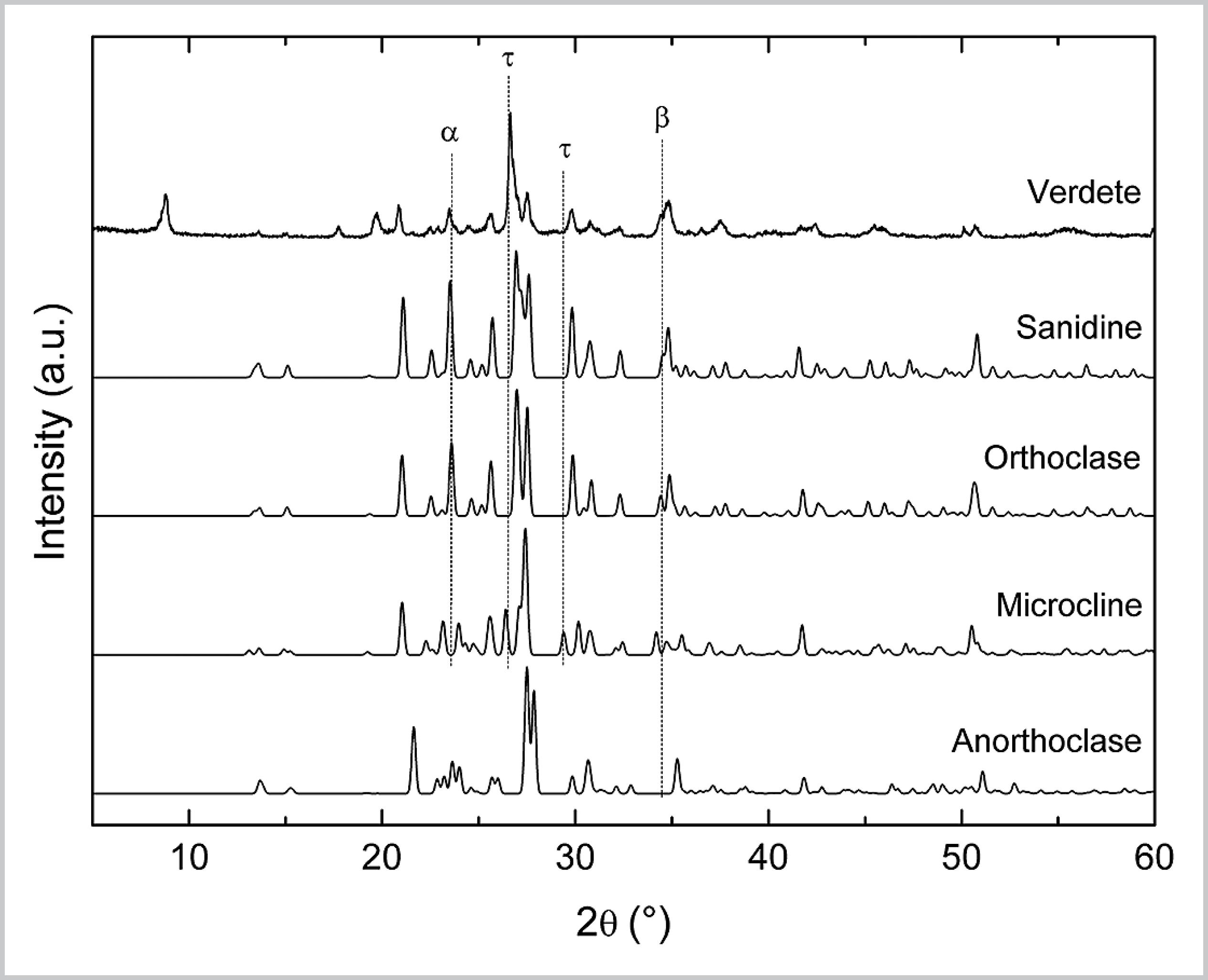Abstract
Silicate rock Verdete, collected in the central region of Minas Gerais state (Brazil) and composed mostly of micas (glauconite and muscovite) and tectosilicates (K-feldspar and quartz), was hydrothermally treated with several reactants in order to release and recover potassium. The hydrothermal products were characterized by flame photometry, XRD, XRF, SEM and EDS. Treatment with sulfuric acid was effective to break the crystal lattice of micas before 1 h of reaction and recovered 24% of potassium in the form of sulfates. The K-feldspar appears to have remained intact during the process. Treatment with a Ca(OH)2 (86 wt.%) - CaCO3 (14 wt.%) mixture did not consume the micas, but K-feldspar was gradually consumed over the 24 h reaction period. The K recovery was probably due to a concurrent hydrolytic framework dissolution of K-feldspar mediated by OH− ions and by the exchange of K+ with Ca2+. The K-bearing species are carbonaceous materials with variable K+/Ca2+ ratios, such as K2Ca(CO3)2.
Keywords:
hydrothermal treatment; potassium recovery; muscovite; glauconite; K-feldspar


